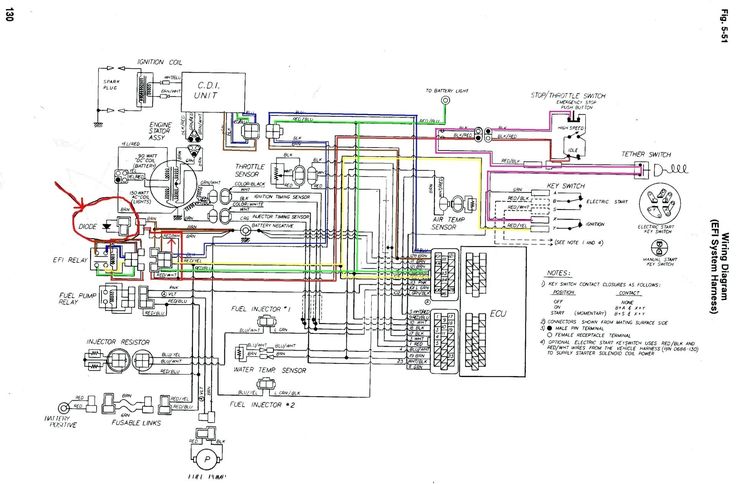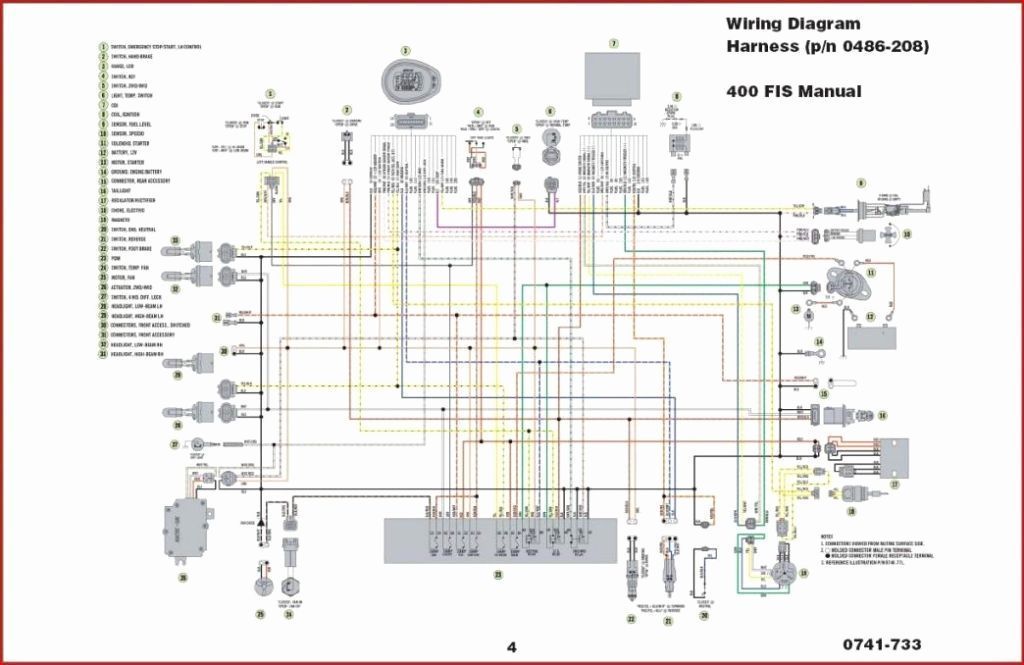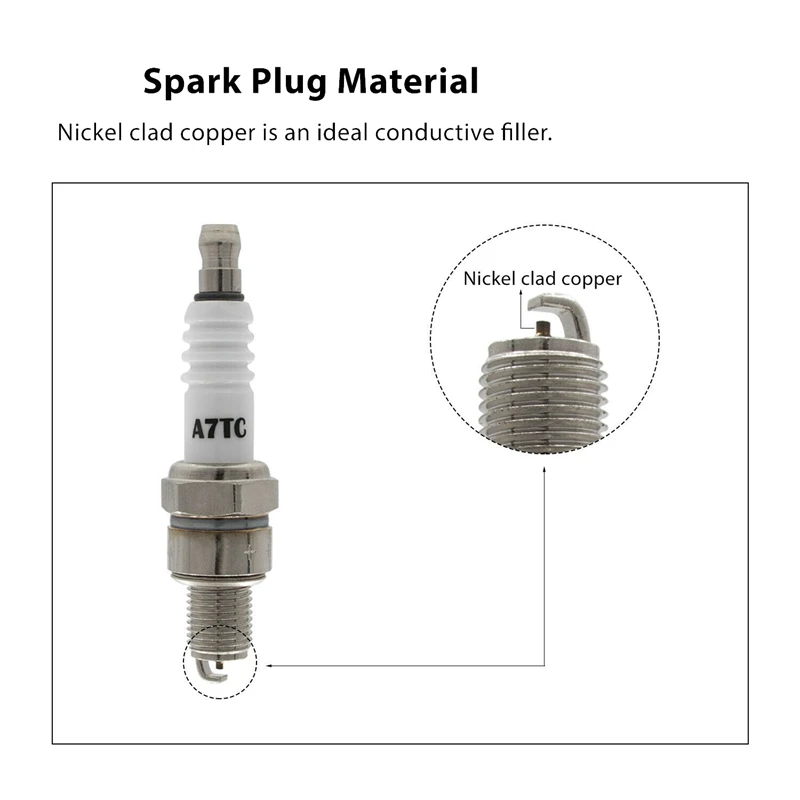Generally speaking you will want to replace the spark plug(s) after each 100 hours of use. This assumes of course that your engine is running normally and you are not experiencing problems like a "rough engine" or an engine that fails to catch while the ignition is turning over. If these occur it's time to pull the plug and determine if it is the problem or some other component is the cause.
Actually pulling the plug, inspecting and replacing it only takes 5 to 10 minutes. However, unlike a car you can't pull a handle and pop the hood to get to the spark plug. On an ATV you have to remove plastic (exterior panels) to expose the plug and depending on your brand that could be a lot of plastic. Pulling off parts is the real time consumer for this task.
Because it takes a bit of work to "open up" your ATV it's a good idea to check a couple of items while they are easily accessible. Make certain that the bolts on the battery cables are firmly attached to the battery posts. A common "won't start" problem is often the result of hard riding loosening the bolts from the battery terminals.
Your exhaust system is another component that is accessible in most models when you have sufficient exterior panels removed to get to the spark plug. Check the bolts holding the pipe to the engine to ensure a secure fit.
The steps we provide below are general in nature and are not meant to replace the instructions found in your OEM owner's manual. Obviously different brands have different engine mounting configurations meaning the location of the spark plug and how easy it is to access will vary. When in doubt, follow the OEM instructions. Our tips are intended to show you that this repair can be done as a DIY project saving you professional labor costs and a more enjoyable ATV experience.
 The last thing you need is debris falling into the engine once you have pulled the plug.
The last thing you need is debris falling into the engine once you have pulled the plug. Use the gap gauge to set the gap and then reinstall.
Use the gap gauge to set the gap and then reinstall. Place the boot over the plug and push down until you hear it snap into position.
Place the boot over the plug and push down until you hear it snap into position.Replacing the spark plug is a simple DIY task that almost anyone can accomplish in a minimal amount of time.
- End of Procedure -
Return to all Repair & Install Guides
For the correct behavior and pageviews, please enable JavaScript in your browser
| Product Code | CPR8E |
| Product EAN | 087295174111 |
| Manufacturer | NGK |
| Shipping Weight | 0. 04 kg 04 kg |
NGK spark plugs, stand out for their quality, steady performance and are therefore fitted for primary production by most major motorcycle and atv manufacturers
Features:
Manufacturer: NGK Spark Plugs
| Product Code | CPR8E |
| Product EAN | 087295174111 |
| Manufacturer | NGK |
| Shipping Weight | 0. 04 kg 04 kg |
| accessories Arctic Cat: | 1000/1000i TRV |
900182
IN STOCK
Price excl. VAT € 4,74 Price incl. VAT € 5,73
900164
IN STOCK
Price excl. VAT € 7,92 Price incl. VAT € 9,58
CR7E
IN STOCK
Price excl. VAT € 8,87 Price incl. VAT € 10,73
DCPR8EB
IN STOCK
Price excl. VAT € 8,26 Price incl. VAT € 10
Cookies are small text files that can be used by websites to make a user's experience more efficient.
The law states that we can store cookies on your device if they are strictly necessary for the operation of this site. For all other types of cookies we need your permission.
This site uses different types of cookies. Some cookies are placed by third party services that appear on our pages.
You can at any time change or withdraw your consent from the Cookie Declaration on our website.
Learn more about who we are, how you can contact us and how we process personal data in our Privacy Policy.
Please state your consent ID and date when you contact us regarding your consent.
If you want to know for what purpose and what cookies we use or if you want to adjust your cookie settings click here
More »
Necessary cookies help make a website usable by enabling basic functions like page navigation and access to secure areas of the website. The website cannot function properly without these cookies.
I AGREE I DISAGREE
Statistic cookies help website owners to understand how visitors interact with websites by collecting and reporting information anonymously.
I AGREE I DISAGREE
Preference cookies enable a website to remember information that changes the way the website behaves or looks, like your preferred language or the region that you are in.
I AGREE I DISAGREE
Marketing cookies are used to track visitors across websites. The intention is to display ads that are relevant and engaging for the individual user and thereby more valuable for publishers and third party advertisers.
I AGREE I DISAGREE
The popularity of ATVs has led to a wide range of models - from simple models with minimal equipment to powerful multi-axle options for purely utilitarian purposes. A separate article is sports ATVs, which are distinguished not only by highly accelerated motors with the utmost lightening of the structure, but also by the use of mechanical gearboxes instead of the usual variator. Such a technique can be both a great way to get adrenaline and help a hunter or farmer. nine0003
A separate article is sports ATVs, which are distinguished not only by highly accelerated motors with the utmost lightening of the structure, but also by the use of mechanical gearboxes instead of the usual variator. Such a technique can be both a great way to get adrenaline and help a hunter or farmer. nine0003
Proper selection of ATV engine oil will allow you to get the maximum resource from it. This is especially important during tough operation - transporting heavy loads, overcoming fords, etc. Even on a prepared ATV with snorkels installed, there is a high risk of water entering the crankcase, which means that the protective properties of the oil must be at a high level. In any case, if an emulsion is found on the dipstick or in the oil tank (on ATVs with a dry sump), the oil must be changed immediately. Will require inspection and gearbox. nine0003
For most models of four-wheel vehicles, ROLF Lubricants GmbH can offer oils of decent quality and attractive prices with reliable counterfeit protection.
Engine oil for ATVs must first of all match the type of engine. The vast majority of existing models are equipped with one- or two-cylinder water-cooled gasoline engines, that is, they require oils of the API S group. A small number of ATVs produced in the most basic configuration continue to use 2T engines - they are simpler, cheaper and lighter. In this case, only special two-stroke oils of API TC quality class can be used. nine0003
Diesel engines are also installed on heavy utility ATVs, including the Side-by-side class. For them, it is worth choosing a specialized oil for diesel engines (API C class group), but filling with universal motor oils is also possible, since their characteristics are suitable for diesel engines used on utility ATVs.
The oil change interval is determined by the manufacturer and is given in the service book. It is recommended to change the oil at the beginning of the season if the ATV is not being driven in the winter, even if it has had little mileage the previous year. nine0003
nine0003
Since most ATVs are equipped with a CVT transmission and do not have a clutch in an oil bath, they do not have an urgent need to use 4T motorcycle oils. The fundamental difference between motor oils for four-stroke engines and conventional automotive oils lies precisely in the presence of friction modifiers and the rationing of anti-friction properties, which is necessary to ensure normal operation of the clutch.
Therefore, the use of ROLF automotive engine oils on such ATVs is more than justified. For example, the instruction manual for BRP Outlander ATVs explicitly states that the original engine oil can be replaced with any SAE 5W-40 automotive oil with a quality class of at least API SG. Given such low requirements, any ROLF 5W-40 oil will work perfectly in this technique. nine0003
You can do the same when buying a diesel ATV. For example, for Polaris Ranger Diesel, the instructions require the use of original Polaris Diesel Oil (SAE 15W-40) engine oil or diesel oils of the appropriate viscosity.
There are only two cases where motor oil must not be poured into an ATV engine. First of all, we are talking about sports models equipped with a “wet” clutch and a manual gearbox in a common lubrication circuit with a motor. They need specialized, synthetic four-stroke oils designed specifically for these operating conditions. nine0003
Two-stroke ATVs also need their own type of lubricant. Of the entire range of two-stroke oils, those that are designed for motor vehicles are optimal, taking into account their inherent operating temperatures and loads.
This oil is designed as a universal oil for motor vehicles with medium and large cylinder displacement. It is compatible with all types of lubrication systems, can work in a gasoline-oil mixture, in separate lubrication of carburetor engines and on two-stroke engines with electronic fuel injection. nine0003
ROLF MOTO 2T ATV Engine Oil
ROLF Moto 2T meets stringent current requirements for two-stroke oils for protection against wear, smoke and carbon deposits. It maintains the performance of the spark plug for a long time, preventing contamination of the electrodes by unburned oil residues. Thanks to anti-wear additives, the engine remains protected from scuffing on the piston and cylinder walls at high temperatures.
It maintains the performance of the spark plug for a long time, preventing contamination of the electrodes by unburned oil residues. Thanks to anti-wear additives, the engine remains protected from scuffing on the piston and cylinder walls at high temperatures.
| Density at 15°C, kg/m 3 | 876.8 |
| Kinematic viscosity at 100 °С, mm 2 /s | 10.76 |
| Kinematic viscosity at 40 °C, mm 2 /s | 81.36 |
| Viscosity index | 118 |
| Flash point in open cup, °C | 158 |
| Pour point, °С | -42 |
| Quality classes | JASO FD/ISO-L-EGD, JASO FB/API TC |
| Approvals | Rotax 253, Piaggio Hexagon |
Four-stroke ATV engines with CVT transmissions are subject to the same standardization systems as for automobiles. That is, the main quality classification is the generally used API standard, and due to the less stringent environmental requirements for ATVs, obsolete classes like API SJ are still used today. nine0003
That is, the main quality classification is the generally used API standard, and due to the less stringent environmental requirements for ATVs, obsolete classes like API SJ are still used today. nine0003
The viscosity of oils is also marked according to the SAE standard used for automotive oils. Since ATVs are often used not only in summer, but also in the off-season, and sometimes in winter, the best choice for them is all-weather oils, which is also confirmed by the above excerpts from the requirements of the instructions.
For wet clutch ATVs, the engine oil must also meet JASO MA2 quality class. It takes into account the specific requirements of such motors for the anti-friction properties of oils. In the ROLF product line, ROLF GT 5W-40 SN/CF has this approval. nine0003
Two-stroke oils are standardized according to a separate group of API classes, of which API TC is currently relevant. But it is optimal to choose an oil produced taking into account additional JASO / ISO specifications with a group of at least C (that is, JASO FC, ISO-L-EGC). Compared to API TC oils, they protect the engine better, smoke less during combustion, and form less carbon deposits.
Compared to API TC oils, they protect the engine better, smoke less during combustion, and form less carbon deposits.
Since the gearbox on ATVs either requires no lubrication at all (dry CVT) or the manual transmission is lubricated directly with engine oil, only the gearboxes require their own lubrication. nine0003
The choice of replacement oil should be based on the properties of the original lubricant and the indications in the operating instructions. Thus, gearboxes with a mechanical differential lock (including an external solenoid) can most often operate on conventional ROLF gear oils of API GL-4 or GL-5 quality class. For example, for Arctic Cat ATVs on most models, the instruction recommends using oils with a viscosity of SAE 75W-90 and API GL-5 quality class. These requirements are met by ROLF TRANSMISSION PLUS 75W-90 GL-4/GL-5. A number of BRP ATVs require the use of a thicker 75W140 grade GL-5 oil, and there is no analogue for it in the current ROLF line.